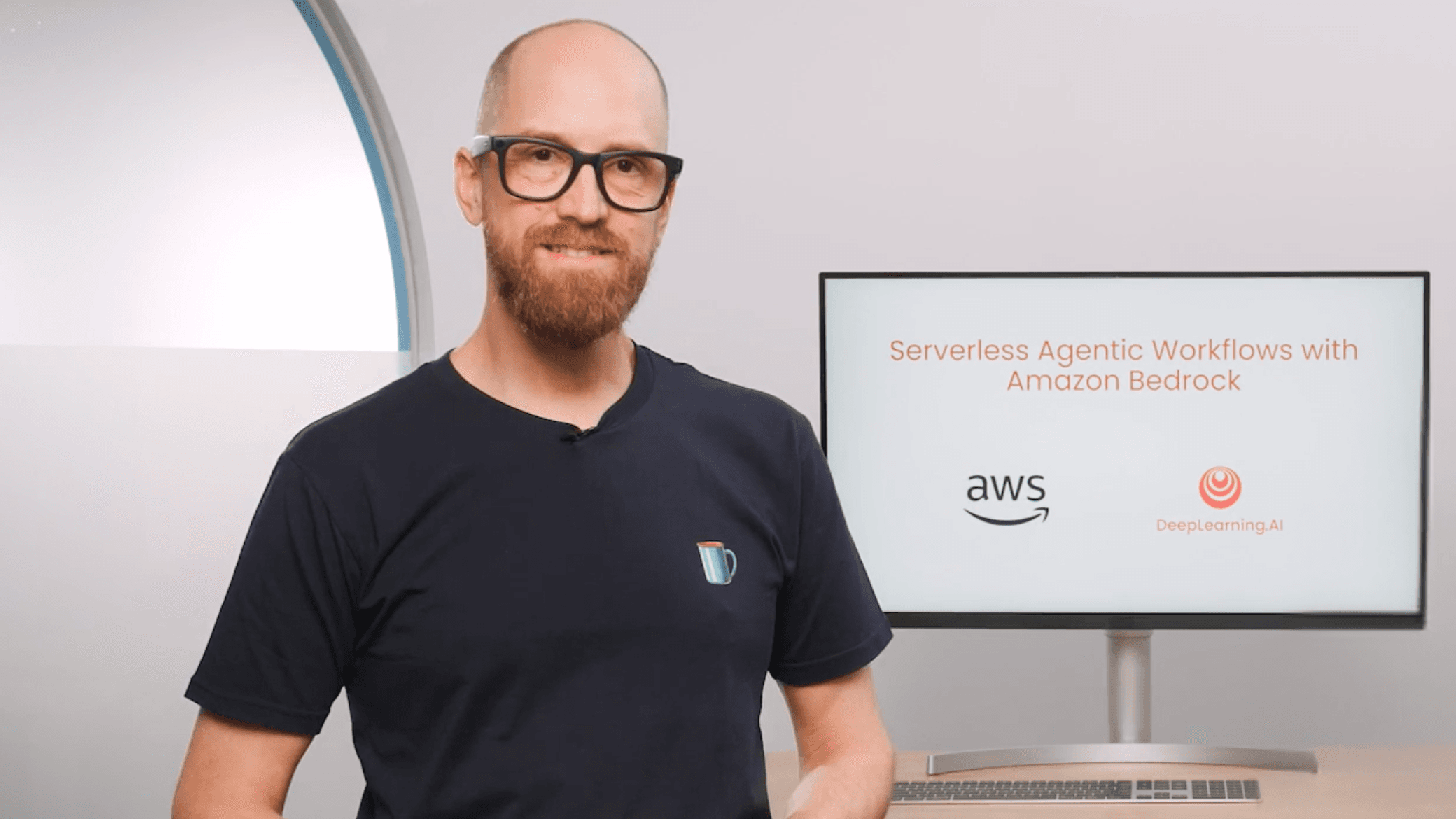
Serverless Agentic Workflows with Amazon Bedrock
Instructor: Mike Chambers

- Intermediate
- 1 Hour 34 Minutes
- 8 Video Lessons
- 6 Code Examples
- Instructor: Mike Chambers
What you'll learn
Build and deploy scalable serverless agentic applications with Amazon Bedrock.
Integrate tools, code execution, and guardrails to manage agentic actions effectively.
Design responsible agents with safeguards to prevent malicious prompts and unintended outputs.
About this course
Agentic workflows handle unpredictable tasks based on user input, like making API calls. A serverless architecture efficiently manages these tasks and varying workloads without maintaining servers, enabling faster deployment.
You will learn to protect sensitive information and shield customers from harmful content by employing agents with guardrails.
This course teaches you to build and deploy a serverless agentic application. You’ll learn to create agents with tools, code execution, and guardrails. The serverless setup is ideal for agents that might need to access many tools or APIs on demand.
You’ll explore this through hands-on examples where you’ll:
- Build a customer service bot for a fictional tea mug business that can handle tasks like answering queries, retrieving information, and processing orders.
- Connect multiple types of agent actions, and implement guardrails for responsible operation.
- Use Amazon Bedrock’s fully managed services to deploy and scale the bot efficiently.
The course will implement two elements essential to the deployment of business applications:
- Serverless deployment to achieve rapid scaling and seamless operation without the need to manage infrastructure.
- Responsible agent to protect your application from malicious prompts and unintended outputs by configuring guardrails.
In detail, here’s what you’ll do:
- Use Amazon Bedrock to create an AI agent, explore how you invoke the agent, and see the trace to review the agent’s thought process and observation loop until it reaches its final output.
- Connect your customer service agent to services like a CRM to get customer details and log support tickets in real time.
- Attach a code interpreter to your agent, giving it the ability to perform accurate calculations, where it writes and runs its own Python code to support its response.
- Implement and configure guardrails to prevent your agent from revealing sensitive information and using inappropriate language.
- Connect your agent to a repository of customer support documents that discuss many issues that the agent can resolve directly or choose to escalate, if necessary, to a human workflow.
- Get a walkthrough of the Amazon Bedrock interface in the AWS console to configure agents, set the guardrails, and connect to knowledge databases, all in an easy-to-configure graphical interface.
By the end, you will have built a sophisticated AI agent capable of handling real-world customer support scenarios, fully serverless, and ready to scale.
Who should join?
Anyone who has basic Python knowledge and wants to build an agentic application for business or personal use. It’s useful to understand serverless deployment and cloud-based applications.
Course Outline
8 Lessons・6 Code ExamplesIntroduction
Video・4 mins
Your first agent with Amazon Bedrock
Video with code examples・18 mins
Connecting with a CRM
Video with code examples・17 mins
Performing calculations
Video with code examples・14 mins
Guard Rails
Video with code examples・15 mins
Reading the FAQ manual
Video with code examples・13 mins
Console Walkthrough
Video・10 mins
Conclusion
Video・1 min
Appendix – Tips and Help
Code examples・1 min
Instructor

Mike Chambers
Developer Advocate for Generative AI at AWS, Co-instructor of Generative AI with Large Language Models
Serverless Agentic Workflows with Amazon Bedrock
- Intermediate
- 1 Hour 34 Minutes
- 8 Video Lessons
- 6 Code Examples
- Instructor: Mike Chambers
Course access is free for a limited time during the DeepLearning.AI learning platform beta!
Want to learn more about Generative AI?
Keep learning with updates on curated AI news, courses, and events, as well as Andrew’s thoughts from DeepLearning.AI!
